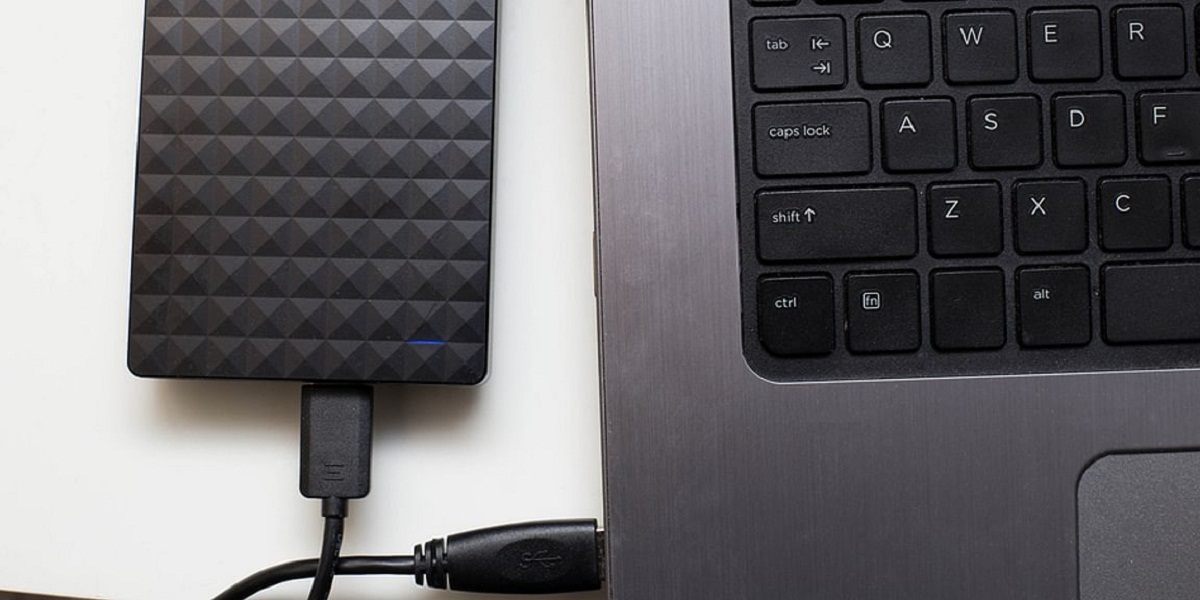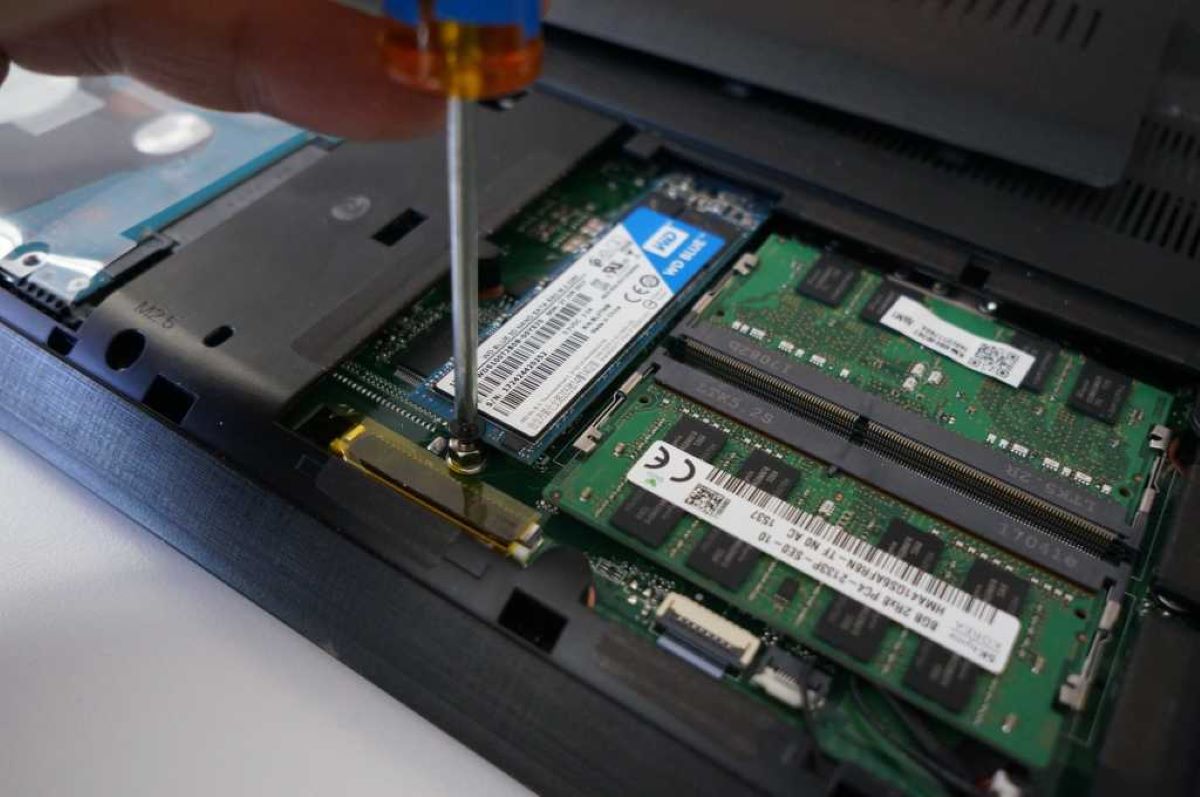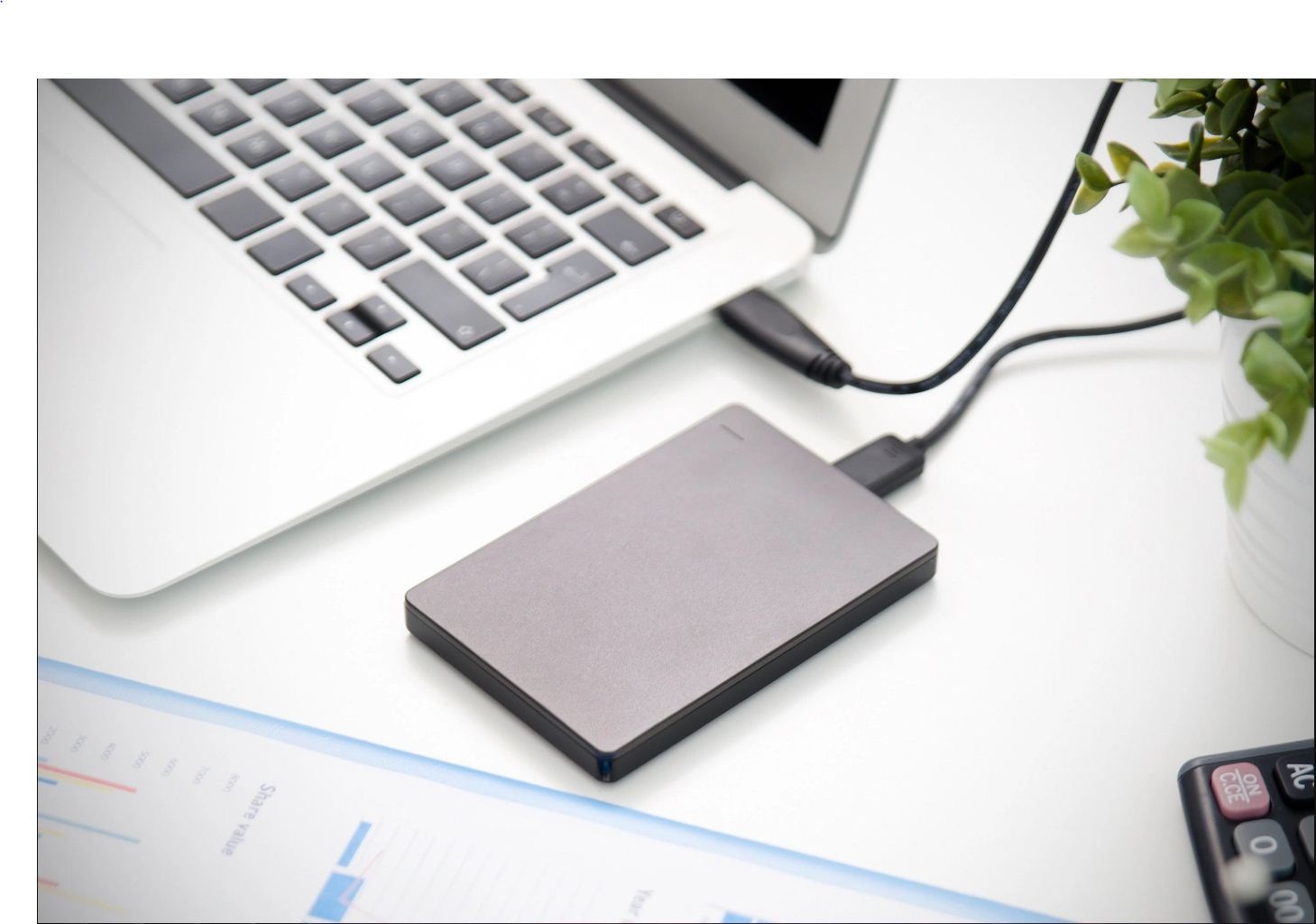

Articles
How Do I Get More Storage
Modified: January 21, 2024
Looking for ways to increase your data storage? Learn how to get more storage for your files and data with our helpful tips and tricks. Find out how to maximize your storage capacity today!
(Many of the links in this article redirect to a specific reviewed product. Your purchase of these products through affiliate links helps to generate commission for Storables.com, at no extra cost. Learn more)
Introduction
Having ample storage space is essential for modern individuals who rely on digital devices to store and access a wide range of files. Whether you use a smartphone, tablet, laptop, or gaming console, running out of storage can be frustrating and limit your ability to store important documents, photos, videos, and applications.
In this article, we will explore different strategies and options to help you get more storage on your devices. From optimizing your existing storage to utilizing external storage options and online storage platforms, we will provide you with practical tips to maximize your storage capacity and ensure that you have enough space for all your files.
But before we delve into the solutions, it’s important to understand the limitations of storage and what factors can impact the available space on your devices.
Key Takeaways:
- Understanding the limitations of storage and implementing effective strategies such as deleting unnecessary files, utilizing cloud storage, and exploring external storage options can help optimize storage capacity and ensure seamless access to files across devices.
- Effective storage management is crucial for maintaining device performance. Regularly reviewing and assessing storage space, utilizing external storage options, and leveraging online storage platforms can minimize clutter and maximize usability.
Read more: How Do I Buy More Storage
Understanding the Limitations of Storage
When it comes to storage, different devices have varying capacities. Smartphones and tablets, for example, typically have a limited amount of internal storage, often ranging from 16GB to 512GB or more. Laptops and computers, on the other hand, tend to provide higher storage capacities, ranging from a few hundred gigabytes to multiple terabytes.
However, it’s important to note that the actual available storage space on your devices may be lower than the advertised capacity. This is because the operating system and pre-installed apps take up a certain amount of space on your device right out of the box. Additionally, other factors such as file system overhead and formatting can result in a slight reduction in the usable storage capacity.
Furthermore, storage space can also be affected by the types of files and applications you store. Large multimedia files like videos and high-resolution photos can quickly consume significant amounts of storage, leaving you with less available space. Similarly, installing and using resource-intensive applications, such as graphic-intensive games, can also impact storage availability.
Now that we have a better understanding of the limitations and factors that affect storage space, let’s explore various strategies to optimize storage on your devices, starting with optimizing your existing storage.
Key Takeaways:
- Understanding the limitations of storage and implementing effective strategies such as deleting unnecessary files, utilizing cloud storage, and exploring external storage options can help optimize storage capacity and ensure seamless access to files across devices.
- Effective storage management is crucial for maintaining device performance. Regularly reviewing and assessing storage space, utilizing external storage options, and leveraging online storage platforms can minimize clutter and maximize usability.
Read more: How Do I Buy More Storage
Understanding the Limitations of Storage
When it comes to storage, different devices have varying capacities. The storage capacity of a device refers to the amount of space available to store files, applications, and data. Understanding the storage capacity of your device is crucial in managing and maximizing storage space effectively.
Smartphones and tablets typically have a limited amount of internal storage. This internal storage can range from as low as 16GB to as high as 512GB or more in more advanced models. Keep in mind that the operating system and pre-installed apps already occupy a portion of this storage space, leaving you with less available storage for your files and applications.
Laptops and computers, on the other hand, usually provide higher storage capacities. Depending on the model and configuration, the storage capacity of a laptop or computer can range from a few hundred gigabytes to multiple terabytes. This larger storage capacity allows for the storage of a greater volume of files and applications.
However, it’s important to remember that the advertised storage capacity may not always reflect the actual available storage space. This is because the operating system, system files, and pre-installed apps take up a certain amount of storage space even before you save any personal files on your device.
Additionally, factors such as file system overhead and formatting can result in a reduction in the usable storage capacity. For example, the file system may reserve a small portion of the storage for system-related operations or data organization. Formatting, especially with storage devices like memory cards or USB drives, can slightly decrease the usable storage space due to the allocation of file system structures.
Furthermore, the types and sizes of files you store can significantly impact the available storage space. Large multimedia files, such as videos, high-resolution photos, and audio files, can quickly consume a substantial amount of storage. Similarly, applications, especially those with large file sizes or that generate sizable cache data, can take up significant space on your device.
Considering these factors, it becomes clear that managing and optimizing storage space is crucial to ensure you have enough space for your files and applications. In the next section, we will explore various strategies to help you maximize your storage capacity and make the most out of the available space on your device.
Optimizing Device Storage
When it comes to maximizing storage space on your device, there are several strategies and techniques you can employ. By implementing these practices, you can free up valuable storage and ensure that you have enough space for your essential files and applications.
The first step in optimizing device storage is to identify and delete unnecessary files and applications. Over time, your device can accumulate a multitude of files that are no longer needed. This includes old documents, duplicate files, unused applications, and downloaded files that have served their purpose. By regularly reviewing and deleting these unnecessary files, you can reclaim significant storage space.
Another effective method to clear up storage space is by clearing cache and temporary files. Cache files are temporary data stored by applications to help speed up their performance. However, these files can accumulate over time and take up a substantial amount of storage space. By clearing cache files regularly, you can free up storage and ensure that your device operates smoothly.
In addition to deleting unnecessary files and clearing cache, utilizing cloud storage options can be a game-changer in optimizing device storage. Cloud storage services, such as Google Drive, Dropbox, or iCloud, provide you with a virtual storage space where you can securely store your files and access them from any device with an internet connection. By moving files to the cloud, you can free up local storage, knowing that your files are safely stored online.
Cloud storage services often offer free storage plans with limited capacity, and you can expand your storage space by subscribing to premium plans. This allows you to store more files, including documents, photos, videos, and even system backups. Cloud storage also offers the advantage of automatic syncing across devices, making it convenient to access your files from various devices seamlessly.
When utilizing cloud storage, it’s important to organize and manage your files effectively. Create folders and categorize your files based on their type or relevance. This makes it easier to locate specific files and keeps your cloud storage space organized and clutter-free.
In the next section, we will explore additional storage options beyond the device’s internal storage and cloud storage solutions. These options can further expand your storage capacity and give you more freedom to store and access your files.
External Storage Options
When the internal storage of your device is not sufficient to meet your storage needs, external storage options can come to the rescue. These options allow you to expand your storage capacity and provide you with additional space to store your files, ensuring that you never run out of storage space.
One popular option for expanding storage is using external hard drives and solid-state drives (SSDs). These devices are portable and connect to your device through USB ports. They offer a large storage capacity, ranging from a few hundred gigabytes to several terabytes, depending on the model you choose. External hard drives and SSDs are versatile and can be used with a variety of devices, including laptops, desktop computers, and gaming consoles. Simply connect the device to your computer or console, and you can easily transfer and store your files on the external storage device.
Another way to expand storage is through memory cards. Memory cards, such as SD cards, microSD cards, or CompactFlash cards, provide a convenient and compact solution to enhance storage capacity. These cards can be inserted into compatible devices, such as smartphones, tablets, cameras, or laptops, to increase the available storage space. Memory cards come in varying sizes and capacities, allowing you to choose the one that suits your needs. With memory cards, you can store additional photos, videos, music, and other files without worrying about filling up the internal storage of your device.
If you require a more extensive storage solution that can be accessed by multiple devices on a network, network-attached storage (NAS) is worth considering. NAS solutions consist of a dedicated storage device connected to your local network. These devices are equipped with multiple hard drives and offer a vast storage capacity that can reach several terabytes or even petabytes. NAS solutions allow you to access and store files from any device connected to the same network, making it an ideal choice for homes or small businesses with multiple users sharing and accessing files.
When using external storage options, it’s important to keep your files organized and secure. Properly label and categorize your files to easily locate them when needed. Additionally, make sure to back up your data regularly, whether it’s on external hard drives, memory cards, or NAS devices, to prevent any loss of important files.
In the following section, we will explore the option of utilizing online storage platforms, also known as cloud storage, which can provide you with flexible and accessible storage solutions.
Read more: How To Get More Storage On A Samsung
Utilizing Online Storage Platforms
In today’s digital age, online storage platforms, also known as cloud storage, have become increasingly popular due to their convenience and accessibility. These platforms provide you with the ability to store your files securely in the cloud and access them from any device with an internet connection. Let’s explore how you can utilize online storage platforms to maximize your storage capacity.
There are several popular cloud storage providers available, each offering different features and storage options. Providers such as Google Drive, Dropbox, Microsoft OneDrive, and iCloud offer reliable and user-friendly cloud storage solutions. These platforms provide a certain amount of free storage, with options to purchase additional storage space based on your needs.
Choosing the right online storage plan depends on various factors, including the amount of storage you require, the integration with other devices and services, and the level of security provided. Consider your specific needs and preferences when selecting a cloud storage provider and plan. Take into account factors such as ease of use, compatibility with your devices, file sharing capabilities, and data encryption.
Once you have chosen a cloud storage provider and plan, it’s important to manage and organize your files effectively in the cloud. Create folders and subfolders to categorize different types of files. This will help you easily locate and retrieve files when needed. Consider creating a logical folder structure that aligns with your workflow and makes sense to you.
Furthermore, managing file versions can be crucial, especially when collaborating with others on the same document. Most cloud storage platforms offer versioning capabilities, allowing you to access and restore previous versions of files if needed. This feature ensures that you can recover any accidental changes or access earlier iterations of a document.
Regularly backing up your files to the cloud is essential to protect your data from loss or device failure. Take advantage of automatic syncing features or schedule regular backups to ensure that your files are always backed up in the cloud. This provides added peace of mind and allows you to easily recover your files in case of any unforeseen circumstances.
Lastly, consider exploring additional features offered by cloud storage providers. Some platforms offer advanced features such as file sharing options, collaborative editing and commenting, password protection for shared files or folders, and integration with other productivity tools.
By utilizing online storage platforms effectively and following best practices for managing and organizing your files in the cloud, you can maximize your storage capacity and enjoy the convenience of accessing your files from anywhere, on any device.
In the next section, we will discuss specific strategies for managing storage on different devices, including smartphones, laptops, and gaming consoles.
Consider using cloud storage services like Google Drive, Dropbox, or iCloud to expand your storage capacity. These services offer a convenient and secure way to store and access your files from anywhere.
Managing Storage on Specific Devices
When it comes to managing storage on specific devices, there are unique strategies and tips that can help you maximize the available storage space. Let’s explore how you can effectively manage storage on smartphones, laptops, computers, and gaming consoles.
Increasing Storage on Smartphones and Tablets
Smartphones and tablets often come with fixed internal storage capacities. However, there are a few ways you can increase the available storage space:
- Invest in a microSD card: Many Android devices have a slot for expandable storage. By inserting a microSD card, you can instantly increase the storage capacity of your device. Transfer apps, photos, videos, and other files to the microSD card to free up space on your internal storage.
- Utilize cloud storage: Take advantage of cloud storage services, such as Google Drive, Dropbox, or iCloud. Upload your files, photos, and videos to the cloud to free up local storage space while still having access to your files whenever you need them.
- Delete unnecessary apps and files: Regularly review your apps and files to identify ones that you no longer use or need. Uninstall unnecessary apps and delete redundant files to free up storage space. Consider backing up important files before deleting them.
Maximizing Storage on Laptops and Computers
Laptops and computers generally offer larger storage capacities, but you can still implement these tips to maximize your storage space:
- Organize files and folders: Create a well-structured folder system to keep your files organized. Categorize files by type, project, or date to easily locate them and avoid cluttering your storage with duplicate or unnecessary files.
- Utilize external storage devices: Connect external hard drives or SSDs to your laptop or computer to store files that are not frequently accessed. Offloading files from your internal storage to external drives can free up space without sacrificing accessibility.
- Clear cache and temporary files: Regularly clear cache and temporary files from your browsers, applications, and system folders. These files can accumulate over time and take up significant storage space. Clearing them periodically can free up storage and improve system performance.
Read more: How Do I Get Into Plumbing
Tips for Storage Management on Gaming Consoles
Gaming consoles, such as PlayStation or Xbox, often have limited internal storage. Here are some tips to manage storage effectively on gaming consoles:
- Use external hard drives: Gaming consoles typically allow you to connect external hard drives for additional storage. Invest in a high-capacity external drive and transfer games, downloadable content, and media files to the external drive to free up the internal storage of the console.
- Delete unused games and apps: If you no longer play certain games or use particular apps, consider uninstalling them from your console to free up storage space. You can always reinstall them later if you want to play them again.
- Manage game updates: Game updates can consume a significant amount of storage space over time. Consider deleting older game updates or managing the installed updates to keep your console’s storage optimized.
By following these tips for managing storage on specific devices, you can make the most of the available storage space and ensure that your devices operate smoothly.
Finally, let’s conclude our article with some key takeaways.
Conclusion
Managing storage space on our devices is essential in today’s digital world, where we increasingly rely on smartphones, tablets, laptops, computers, and gaming consoles to store important files, applications, and media. By understanding the limitations of storage and implementing effective strategies, we can optimize storage capacity and ensure that we have enough space for our needs.
We explored various strategies for optimizing device storage, such as deleting unnecessary files and apps, clearing cache and temporary files, and utilizing cloud storage options. By regularly decluttering our devices and leveraging cloud storage, we can free up valuable space and securely store our files in the cloud.
We also looked at external storage options, including external hard drives, SSDs, memory cards, and network-attached storage (NAS) solutions. These options offer expandable storage capacity, allowing us to store and access our files beyond the limitations of our device’s internal storage.
Moreover, we discussed the benefits of utilizing online storage platforms or cloud storage providers. With providers like Google Drive, Dropbox, Microsoft OneDrive, and iCloud, we can securely store our files in the cloud and access them from any internet-connected device. Proper management of files, regular backups, and effective utilization of cloud storage features ensure maximum efficiency and accessibility.
Furthermore, we provided tips for managing storage on specific devices, such as increasing storage on smartphones and tablets through microSD cards and cloud storage, maximizing storage on laptops and computers through organization and external drives, and effectively managing storage on gaming consoles through external drives and managing updates and installed games.
In conclusion, effectively managing storage space is crucial for maintaining the performance of our devices and ensuring that we can store and access our files seamlessly. By implementing the strategies and tips outlined in this article, you can optimize storage capacity, minimize clutter, and maximize the usability of your devices.
Remember, storage management is an ongoing process. Regularly review and assess your storage space, delete unnecessary files, and utilize external storage options or online storage platforms to keep your devices running smoothly. With these practices in place, you can enjoy a hassle-free storage experience and have ample space for all your digital needs.
Frequently Asked Questions about How Do I Get More Storage
Was this page helpful?
At Storables.com, we guarantee accurate and reliable information. Our content, validated by Expert Board Contributors, is crafted following stringent Editorial Policies. We're committed to providing you with well-researched, expert-backed insights for all your informational needs.














0 thoughts on “How Do I Get More Storage”